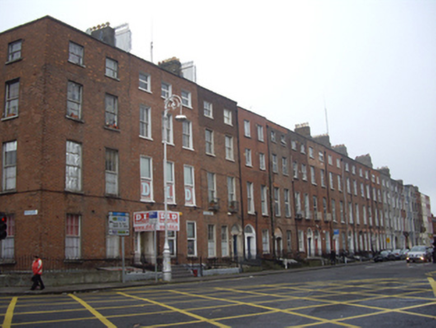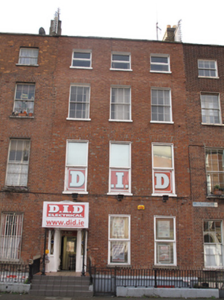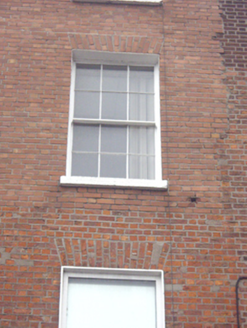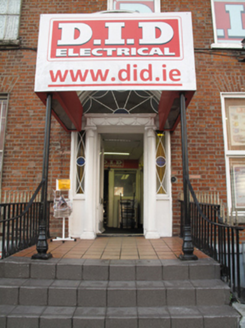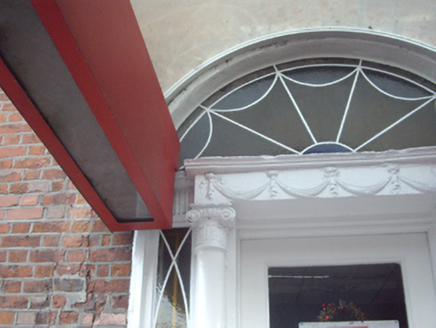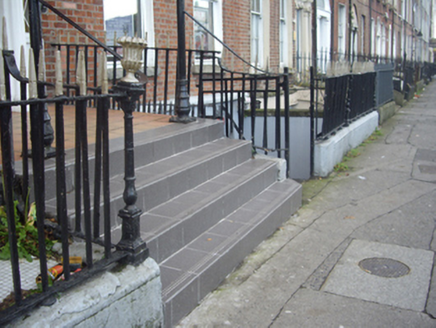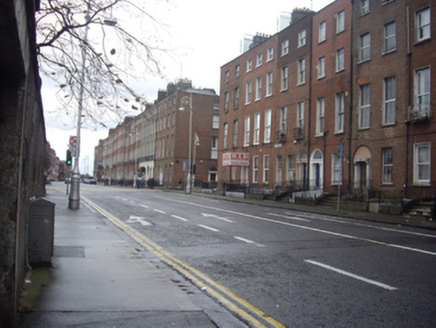Survey Data
Reg No
50010852
Rating
Regional
Categories of Special Interest
Architectural, Artistic
Original Use
House
In Use As
Shop/retail outlet
Date
1790 - 1810
Coordinates
315940, 235455
Date Recorded
28/11/2011
Date Updated
--/--/--
Description
Terraced three-bay four-storey house over basement, built c.1800. Now in commercial retail use. M-profile slate roof, hipped to south of rear pitch with brick chimneystacks to both party walls. Roof hidden behind parapet wall with granite coping. Red brick walls laid in Flemish bond on painted granite plinth course over rendered basement walls. Gauged brick flat-arched window openings with patent rendered reveals, painted granite sills, six-over-six pane timber sliding sash windows to second floor, replacement uPVC windows elsewhere. Round-arched door opening with moulded surround and painted stone Ionic doorcase, columns atop plinth blocks, with slender traceried sidelights, stepped lintel cornice embellished with swags, replacement fanlight, and replacement glazed timber door. Door opens onto tiled platform and three tiled steps bridging basement. Platform and basement enclosed by original wrought-iron railings on moulded granite plinth wall having cast-iron corner posts.
Appraisal
This Georgian townhouse has a notable Ionic doorcase with traceried sidelights. The retention of some timber sash windows enhances the historic character of the building, as does the retention of the stone plinth and iron gate and railings to the basement area. The building forms a component part of an important Georgian square and the whole contributes significantly to the historic Georgian character of this district. Mountjoy Square was built on lands formerly belonging to Saint Mary’s Abbey and laid out in 1790 by Luke Gardiner II, and completed by 1818. Originally called Gardiner Square, the plan was to develop a strong vista from Custom House to Mountjoy Square then on to the intended Royal Circus. Although failing to achieve his original ambitious plan for a palace façade with flanking domed pavilions, Mountjoy Square is more carefully laid out than the city’s other Georgian squares. The east-west approaches are offset, to create a sense of enclosure. After falling into serious neglect and dereliction throughout the twentieth-century, resulting in the loss of one third of its original buildings, the square has since been repaired.
